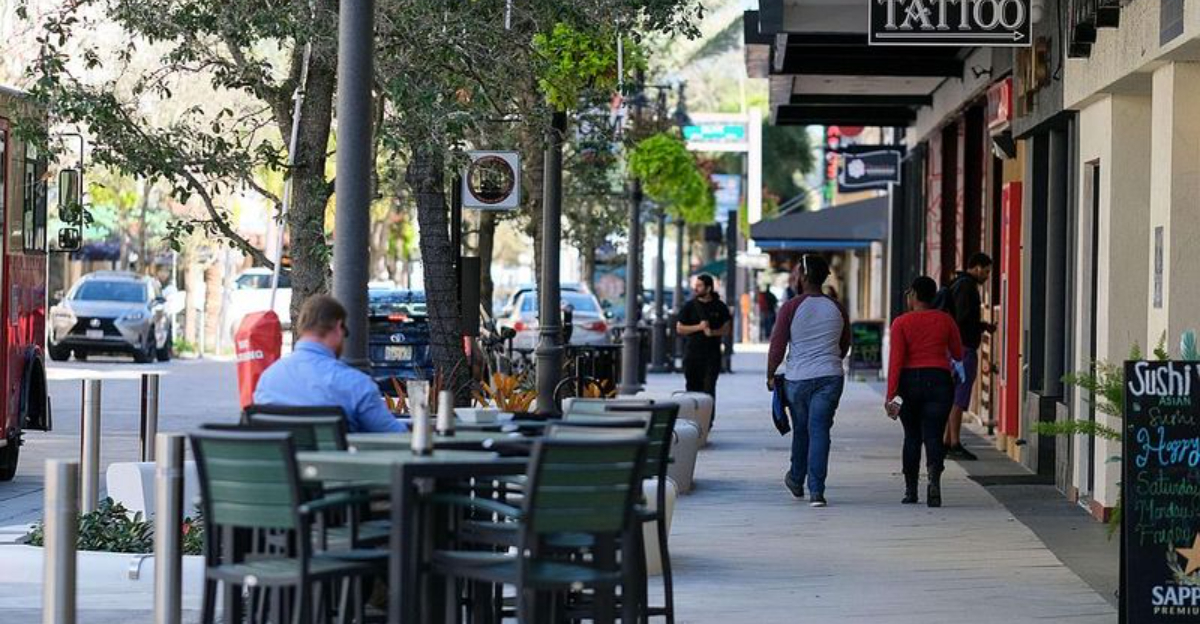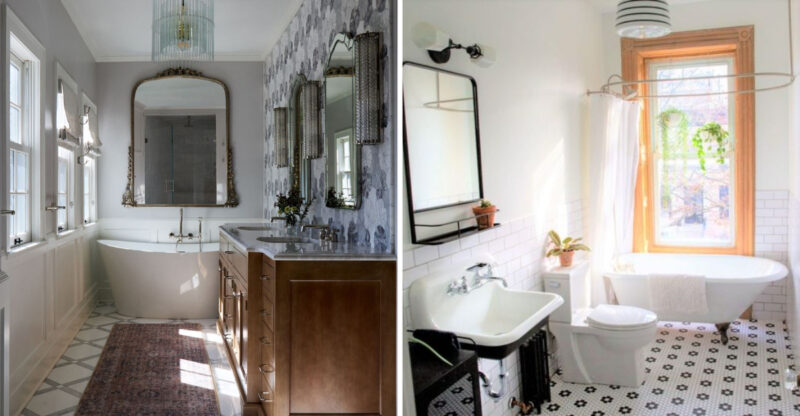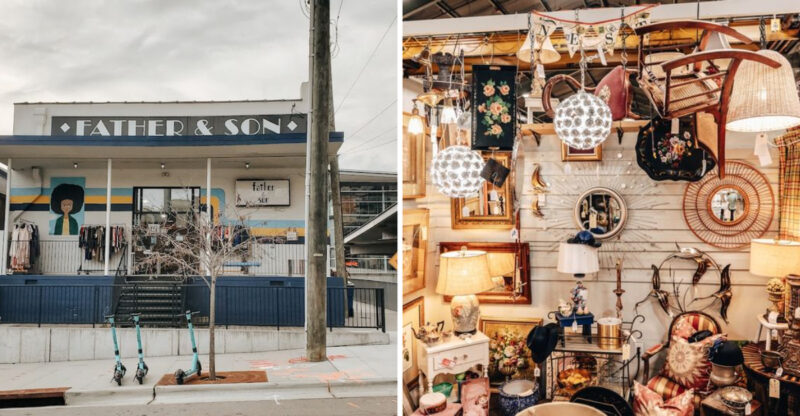8 Historic Florida Streets With Curb Appeal Fails And 4 Needing Makeovers

Florida’s historic streets tell stories of bygone eras, but not all have aged gracefully. Some once beautiful avenues now sport mismatched facades, overgrown landscaping, or outdated features that diminish their charm. Others simply need a little TLC to restore their former glory and showcase the Sunshine State’s unique architectural heritage.
1. Duval Street’s Neon Nightmare
Key West’s famous thoroughfare suffers from visual clutter that masks its historic bones. Bright neon signs compete for attention while inconsistent storefront styles create a jumbled appearance.
Original Bahamian and Victorian architecture gets lost behind modern additions. The street could benefit from design guidelines that honor its maritime past while still allowing for the quirky character that makes Key West special.
2. Palm Avenue’s Concrete Jungle
Miami’s Palm Avenue traded its namesake trees for concrete sidewalks and sparse landscaping. The street once lined with royal palms now offers little shade or greenery to soften its historic Mediterranean Revival buildings.
Residents hurry past rather than stroll and admire the architecture. A return to lush tropical plantings would restore the avenue’s intended character and provide welcome relief from Florida’s intense sunshine.
3. St. George Street’s Souvenir Sprawl
St. Augustine’s oldest street has succumbed to tourist trap syndrome. Tacky souvenir shops with garish window displays dominate the historic Spanish colonial facades.
Plastic pirate statues and neon t-shirt shops overwhelm the authentic character. The nation’s oldest city deserves retail that complements rather than competes with its remarkable history, allowing visitors to experience the genuine colonial atmosphere that makes this street truly special.
4. Flagler Avenue’s Faded Glory
New Smyrna Beach’s main street retains its historic structures but suffers from inconsistent maintenance. Peeling paint, mismatched awnings, and hodgepodge signage create a disjointed appearance despite good bones.
Some buildings shine while neighbors languish. A community driven refresh with a cohesive color palette would unify the street without sacrificing individual business identities, bringing back the coastal charm that made this avenue a destination.
5. Orange Avenue’s Parking Paradise
Orlando’s historic downtown street prioritized cars over character. Street-facing parking lots interrupt the flow of vintage storefronts, creating gaps in the pedestrian experience like missing teeth in a smile.
The asphalt expanses radiate heat and lack visual appeal. Converting even a few lots to pocket parks or outdoor dining spaces would restore continuity to the streetscape while providing gathering places that highlight rather than hide the avenue’s historic charm.
6. Tarpon Avenue’s Chain Store Invasion
Tarpon Springs’ historic Greek district faces modern intrusion. National chain stores with corporate cookie cutter facades disrupt the unique Mediterranean character that made this sponge diving community special.
Standard signage and generic storefronts clash with neighboring authentic buildings. A design code encouraging new businesses to adopt elements of the street’s Greek heritage would preserve the cultural identity that draws visitors to this distinctive Florida community.
7. Las Olas Boulevard’s Landscaping Letdown
Fort Lauderdale’s upscale shopping street features stunning architecture hampered by uninspired landscaping. Sparse palm trees in concrete planters offer minimal shade, while flowerbeds appear as afterthoughts rather than design elements.
The boulevard lacks the lush tropical feel expected in South Florida. Introducing layered plantings with colorful native species would create visual interest and pedestrian comfort while complementing the Mediterranean and Art Deco buildings that line this otherwise elegant street.
8. Park Avenue’s Plastic Fantastic
Winter Park’s showcase street suffers from vinyl modernization fever. Historic buildings have been wrapped in plastic siding or covered with synthetic stucco that mimics but never quite captures authentic materials.
Fake shutters that don’t fit windows and foam decorative elements cheapens the street’s appearance. Returning to traditional materials like wood, brick, and genuine stucco would restore integrity to these century old structures and enhance the avenue’s reputation for sophisticated charm.
9. Palafox Street’s Potential Renaissance
Pensacola’s main thoroughfare shows promising signs of revival. Already blessed with intact historic architecture, this street needs consistent storefront standards to reach its full potential.
Some buildings showcase beautiful restoration while others hide behind outdated modifications. A facade improvement grant program could encourage property owners to reveal original features currently concealed by mid century additions, creating a cohesive streetscape that celebrates Pensacola’s rich Spanish and early American heritage.
10. Clematis Street’s Sidewalk Solution
West Palm Beach’s historic district has good bones but cramped pedestrian spaces. Narrow sidewalks force people to walk single file past beautiful Mediterranean Revival and Art Deco buildings.
Outdoor dining spills into walkways creating obstacle courses for visitors. Widening pedestrian areas through strategic road diet techniques would create room for both strolling and dining while allowing people to properly appreciate the street’s architectural treasures, transforming it into a true promenade.
11. Fernandina’s Centre Street Charm Challenge
Amelia Island’s Victorian era main street needs cohesive lighting to shine after dark. Beautiful daytime architecture disappears at sunset due to inadequate and inconsistent illumination.
Some blocks feature historic style lamps while others rely on harsh security lights. A coordinated lighting plan with period appropriate fixtures would highlight architectural details after dark, extending the visitor experience into evening hours and creating a magical atmosphere worthy of this wonderfully preserved 19th century streetscape.
12. Ybor City’s Seventh Avenue Color Crisis
Tampa’s historic Cuban district features architectural treasures painted in clashing colors. Historic brick buildings sport paint schemes that ignore traditional palettes, creating a carnival atmosphere that undermines the street’s authentic character.
Some structures shine in period appropriate hues while neighbors opt for neon brights. A voluntary color consultation program could guide property owners toward historically accurate choices that would unify the streetscape while honoring Ybor City’s unique cultural heritage as America’s cigar manufacturing capital.






